Jeita Grotto, Lebanon
These karstic limestone caves are located in the Nahr Al-Kalb valley in Beirut, Lebanon. This site is also known as _“The Pearl Of Nature in Lebanon”._ The caves have a total length of 2200 meters, so it takes a couple of hours to visit them fully. These limestone formations are just breathtaking!
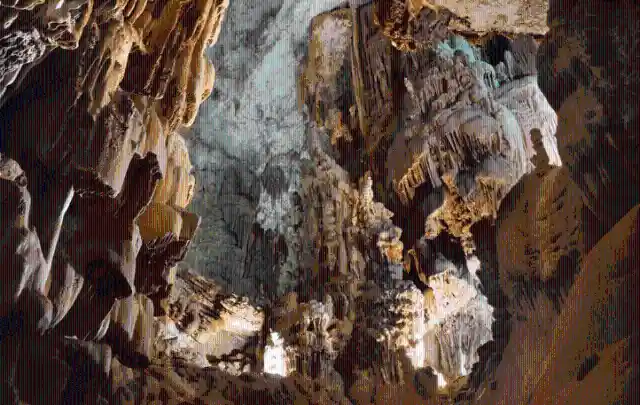
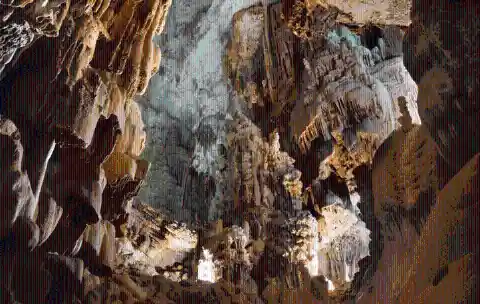
The caves were discovered by accident by Reverend William Thomson in 1836, but at that time, he didn’t realize how large they were. Visits are allowed only by boat because of their river channels, which provide fresh drinking water to the majority of the Lebanese. If you ever travel to Lebanon, Geita Grotto should definitely be on your bucket list!
Milford Sound Fiord, New Zealand
The Milford Sound Fiord is located inside the Fiordland National Park, in South Island, New Zealand. This national park is part of Te Wahipounamu, an enormous mountainous area that is considered a UNESCO World Heritage Site. Milford Sound Fiord boasts spectacular panoramic views of the national park, probably the best one. This explains why the mountain is also referred to as _“The jewel of Fiordland National Park”! _
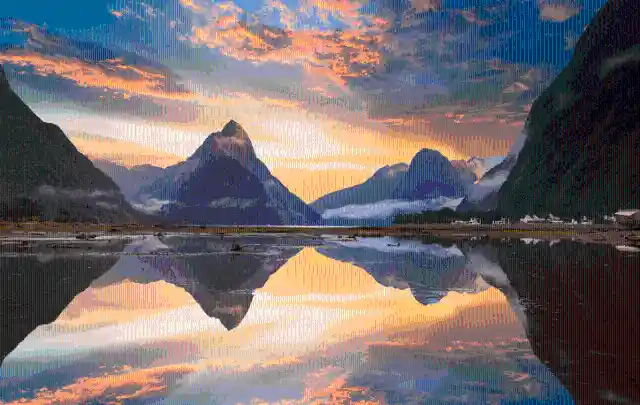
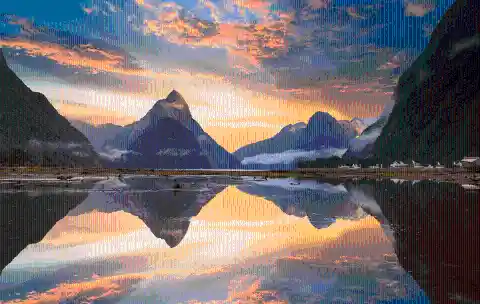
The remote location of this fiord makes this experience thrilling and unique, and the good news is that you can reach the fiord by car. Surrounded by steep cliffs and an immense rainforest, you will feel like on another planet. If you don’t have your own car, you can go on a day tour, or you can take a bus to the Fiordland National Park and camp there. However, we highly recommend staying at least one night because the best views are at sunrise.
Giant’s Causeway, Northern Ireland
Located in County Antrim, on the north coast of Northern Ireland, The Giant’s Causeway was declared a UNESCO World Heritage Site in 1986. Every year the area receives more than one million visitors! The area is composed of more than 40,000 interlocking stone columns, and today, it’s considered Ireland’s National Nature Reserve.
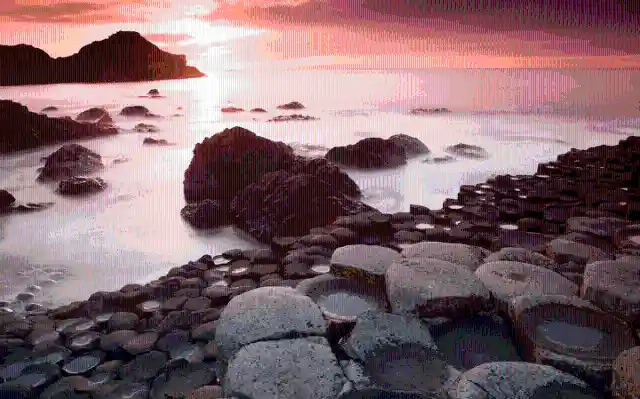
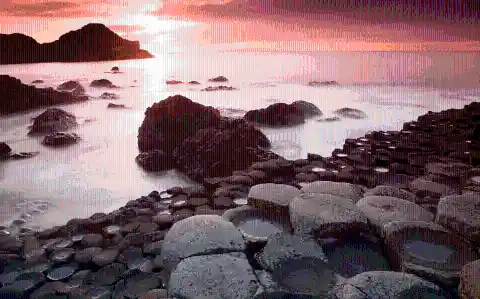
The site’s peculiar name stems from the myth of the Irish giant Fionn Mac Cumhaill. According to this myth, the columns are the remains of a road that this giant built across the North Channel. But why did giant Fionn Mac Cumhaill build that road? Well, apparently, a Scottish giant named Benandonner challenged him to build it. Although this myth is quite amusing, scientists have explained that the columns are the result of an ancient volcanic eruption.
Mount Kelimutu, Indonesia
This startling place is located on the island of Flores, Indonesia. Mount Kelimutu is one of Indonesia’s many fantastic volcanoes and probably the most famous of all. What makes this volcano so attractive is the tri-colored lake that lies within the summit. Believe it or not, the lake’s color depends on the season of the year. Isn’t that the strangest thing ever?
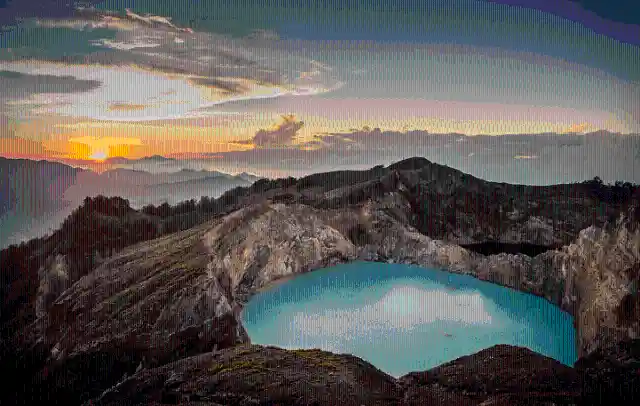
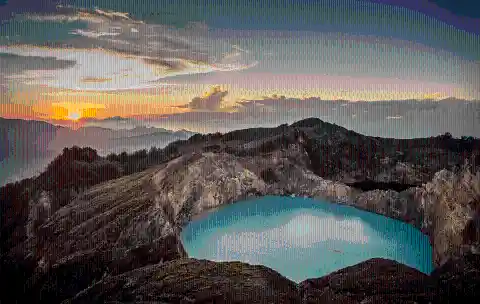
Actually, Kelimutu consists of not one but three lakes, and each of them has different colors. The Tiwu Ata Mbupu, or_ Lake Of Old People_, is often blue, but it can also turn turquoise. However, the Tiwu Nuwa Muri Koo Fai, or _Lake Of Young Men And Maidens_, and the Tiwu Ata Polo, or the _Enchanted Lake,_ are usually green or red.
Son Doong Cave, Vietnam
Located in the heart of Vietnam’s _Phong Nha Ke Bang National Park_, Son Doong is considered the largest cave in the world. Surprisingly, this place has only been opened to the public since 2013. It contains one of the largest subterranean rivers in the world, and it’s known as _“Cave Of The Mountain River”_ because of that.
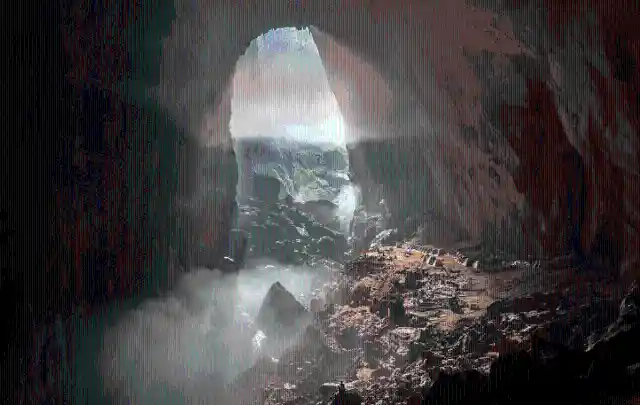
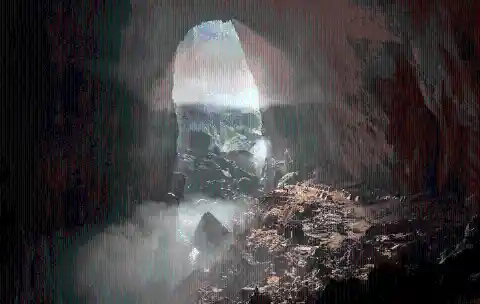
The caves were discovered by a local man in 1991, and they earned international recognition in 2009. During that year, a group of cavers from the British Cave Research Association traveled to the park and explored the cave. Today, this British organization organizes the daily tour guides through the caves, and they work hard to protect the area from pollution and human damage.
Caño Cristales, Colombia
Located in the Serrania De La Macarena in the province of Meta, Colombia, this unique river is known as the_ “River Of Five Colors”_ or the _“Liquid Rainbow”_. The river is most famous because of its multiple and striking colors, which range from red, yellow, green, blue, and black. The best time to go is from July to November since this is when you’ll most appreciate the river’s many colors and shades.
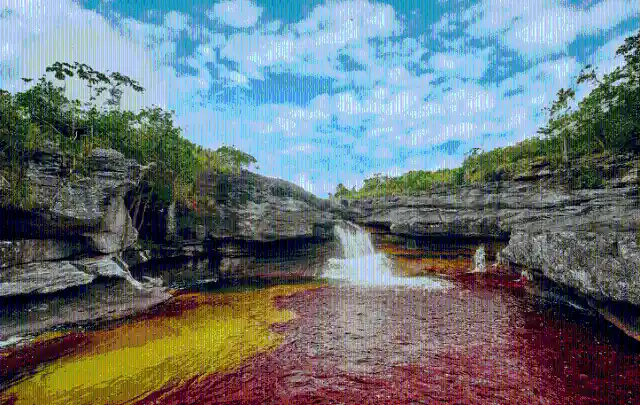
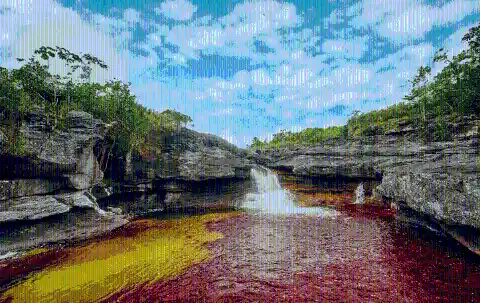
Caño Cristales is the perfect place for people who love nature and peace. Surrounded by dense tropical vegetation, you will only hear the splashing sound of the waterfall and the birds’ chorus. In order to access this site, you should take a bus from Villavicencio, the capital city of Meta, to the town of Macarena. From this village, you can take a day tour and enjoy the natural scenery shown in the picture above.
Colca Canyon, Peru
Another marvelous natural site that you can find in South America is the Colca Canyon, located at the Colca River in southern Peru. After the ancient city of Macchu Picchu and the city of Cuzco, Colca Canyon is the third most-visited place in Peru, and it’s considered the world’s second deepest canyon. Looking for an adventure? Try the Colca Canyon!
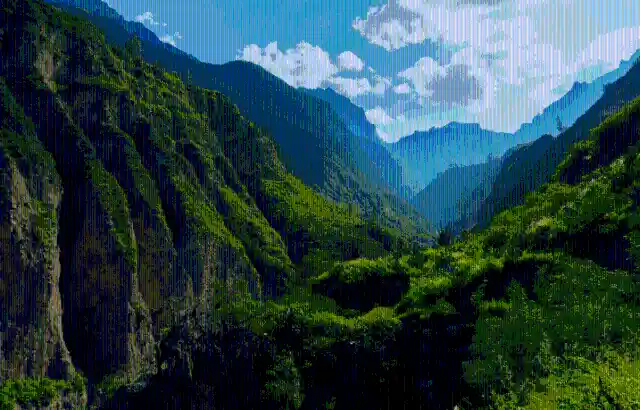
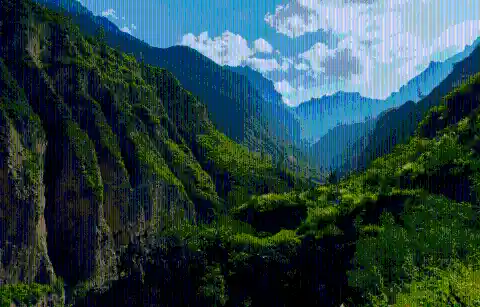
The canyon is over 11,000-foot high and has one of the best views in the world. The most interesting thing about this area is that it is full of pre-Inca roots and towns that were founded during the colonial time. The local people continue cultivating their land on stepped terraces called _andenes,_ just like the Incas did. History lovers, this place is a must!
Arches National Park, USA
The Arches National Park is located in eastern Utah and it’s formed by more than 2,000 natural sandstone arches and many pinnacles, huge fins, and massive balanced rocks. The landscape is full of contrasting colors, landforms, and textures. Remember that you’ll find the best views at sunset!
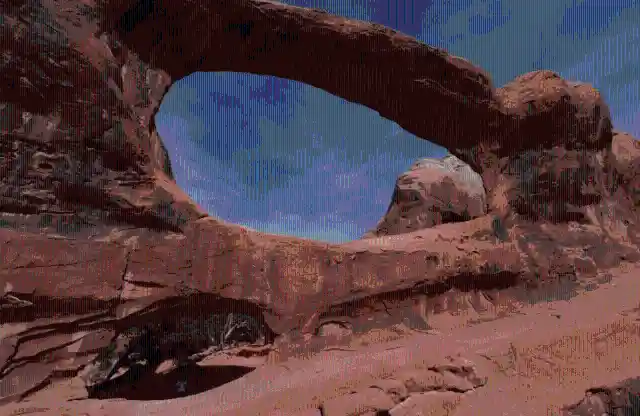
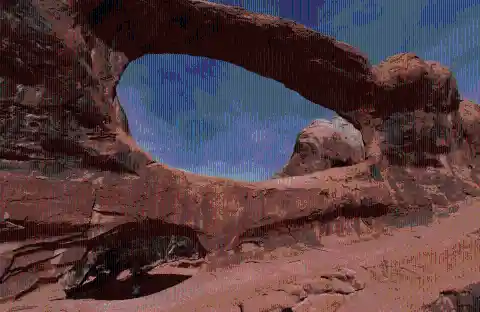
Arches National Park features bright red rocks and a clear blue sky throughout the year. It’s also a fantastic place to go climbing, but you should bear in mind that more than half of the park’s territory is off-limits, mainly due to security reasons. Also, you can go biking through the park’s amazing roads. Finally, there are several hiking routes which can take between 15 minutes to 4 hours! And if this is not enough, you can take your tent and go camping!
Bungle Bungles, Australia
Located in East Kimberley in Western Australia, the Purnululu National Park is of the country’s most beautiful UNESCO World Heritage Sites. The park is famous because of its sandstone domes of orange and grey color. As you walk through the park, you will see that some of these domes are covered with thick layers of grass, which is something quite impressive to see.
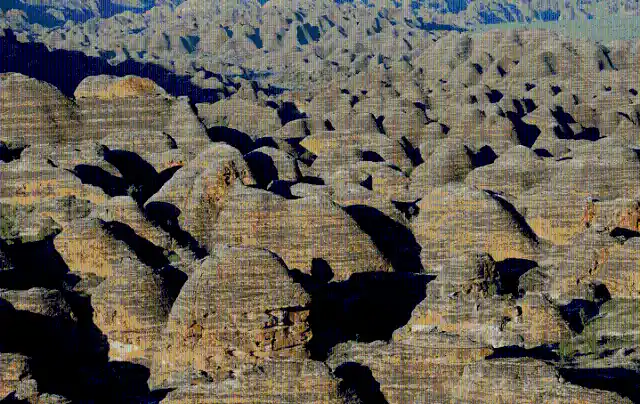
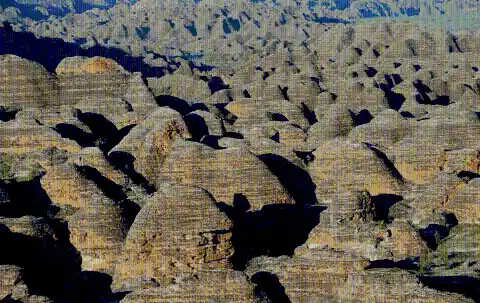
Bungle Bungles is home to more than 130 bird species and native animals, as the naitail wallaby and short-eared rock wallaby. For those history lovers, you should know that the park was once home to the Aboriginal Gija and Djaru, although it hasn’t been inhabited for several decades. Nowadays, the Djaru and Gija people live in the nearby Prunululu National Park, so you can visit this park as well and learn about their culture and traditions.
Khao Ta-Pu Island, Thailand
If you’re a beach fan, then there’s nothing you’ll enjoy more than the karst towers of the Khao Ta-Pu Island! Located in Ao Phang Nga National Park in Thailand, these 40-meter natural towers are definitely a must-visit. Believe it or not, these natural formations were unknown to the world until the 70s, when our favorite secret agent came to the island…
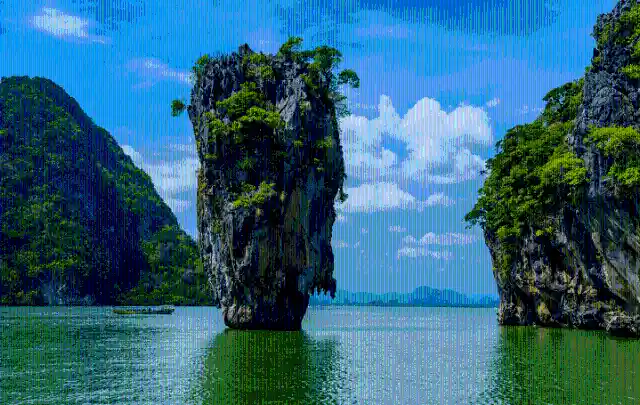
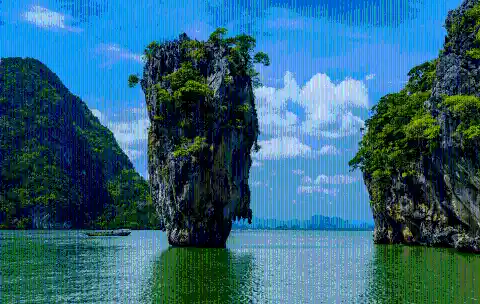
In 1974, the famous James Bond film _The Man With The Golden Gun _was released. The agent’s nemesis Francisco Scaramanga was hiding out at _Phang Nga Bay_ because he used the island’s solar panels to power his laser gun. The film referred to the island’s unique geological formations as _“mushroom-shaped rocks.”_ After that movie, people from all over the world wanted to visit the island where James Bond had defeated his opponent! In fact, the island is currently known as James Bond Islandrather than Khao Ta-Pu.
Ah-Shi-Sle-Pah Wilderness Area
If you are looking for an adventure, go to _Ah-Shi-Sle-Pah Wilderness_ and discover the site’s many animals and plant fossils! You will see the remains of prehistoric crocodiles, turtles, fish, and dinosaurs. Besides that, you will find a tranquil and beautiful landscape, far from the city’s hustle and bustle. Keep on reading about the most beautiful and unique natural landscapes in the world!
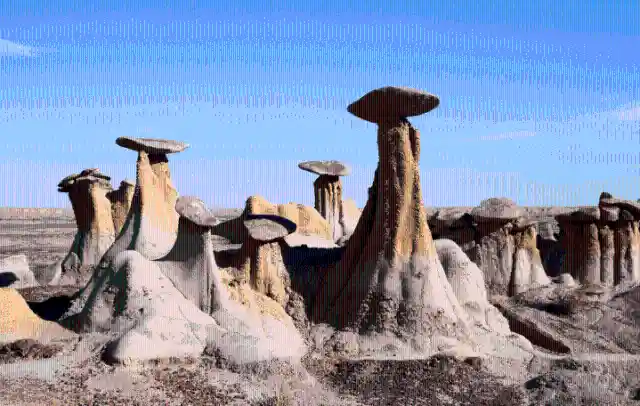
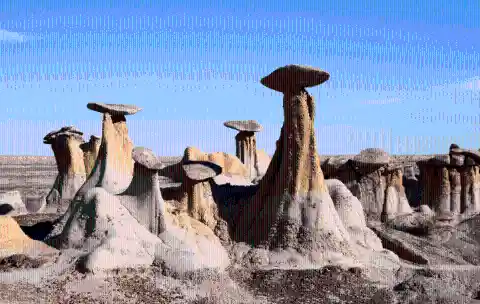
If you are looking for an adventure, go to _Ah-Shi-Sle-Pah Wilderness_ and discover the site’s many animals and plant fossils! You will see the remains of prehistoric crocodiles, turtles, fish, and dinosaurs. Besides that, you will find a tranquil and beautiful landscape, far from the city’s hustle and bustle. Keep on reading about the most beautiful and unique natural landscapes in the world!
Atacama Desert, Chile
The Atacama Desert is located on the Pacific coast of Chile, and it’s considered the driest place in the world. According to scientists, it receives an average of barely 1 cubic centimeter of rain each year. This vast and arid desert happens to be one of the most visited places in South America, not only because of its peculiar natural formations but also because of the rich wildlife that you can find.
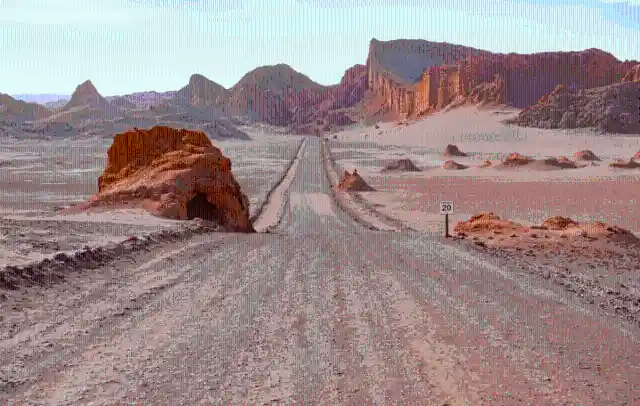
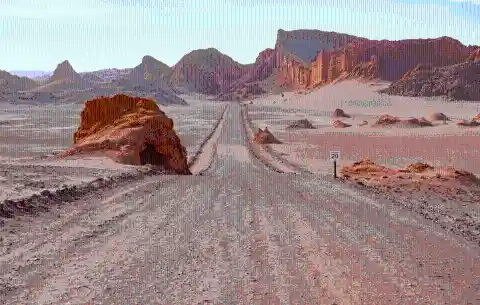
One of the desert’s most visited landmarks is the Valley Of The Moon, where you can find weird rock formations, intense blue lagoons, and salt flats. Near the desert, you can find small villages where local people will teach you about their culture and traditions. If you want to rest after hiking, you can go to the northern coastal region, where you can lie on the beach and enjoy the clear water!
Redwood Forest, USA
Located at the northwest coast of California, the Redwood National and State Park is home to the giant 350-foot redwood trees. They are considered the second tallest and most massive trees on the planet (second to the sequoia trees) as they can reach five feet bark and 12 inches thick! Also, the park has rich flora and fauna, and a couple of beautiful rivers cross the area.
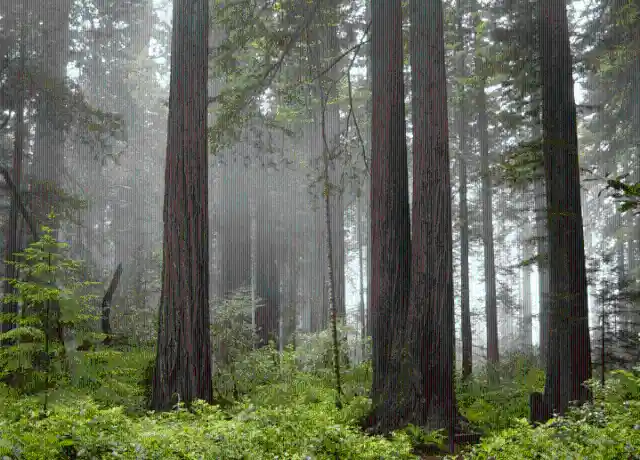
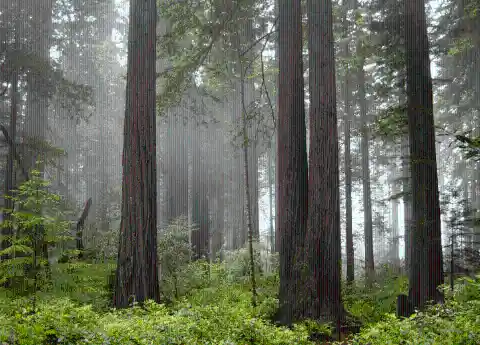
Sadly, illegal deforestation has damaged part of the park. In 1850, the forest used to cover more than 2,000 acres of the Californian coast, while today, that area has been reduced to half. Today, the reserve tries to protect the local species of flora and fauna that live there. You can find rare animals such as the tidewater goby, the chinook salmon, and the Steller’s sea lion. In 1980, the park became a UNESCO World Heritage Site.
Vinicunca Mountain, Peru
If you are planning a holiday to Peru, this natural scenery will blow your mind! Only a two-hour drive from the city of Cusco, the Vinicunca Mountain is one of the most spectacular sites of the region. It’s also known as _Rainbow Mountain _or _Montaña De Siete Colores _in Spanish. The challenge is to count how many colors you see!
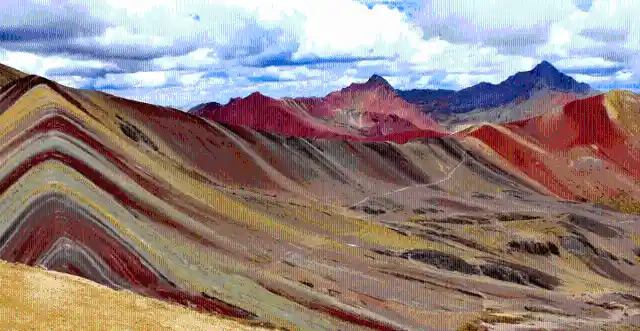
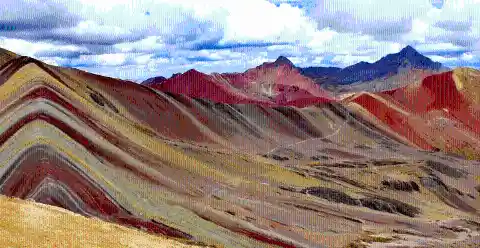
The enormous variety of colors is due to the mountains’ altitude and due to the fact that they’re close to the ocean. We recommend taking a guided tour from Cusco because even experienced travelers have declared that it’s hard to get there. The best time of the year to visit this place is from July to December.
The Grand Prismatic Spring, USA
Considered the largest hot spring in the U.S and the third largest spring in the world, The Grand Prismatic Spring is located in Yellowstone National Park. It was discovered by a group of geologists in 1871, and they named it Primastic Spring because of its striking coloration. It pretty much looks like a real prism since you can spot all the colors of the rainbow: red, yellow, blue, orange, and green!
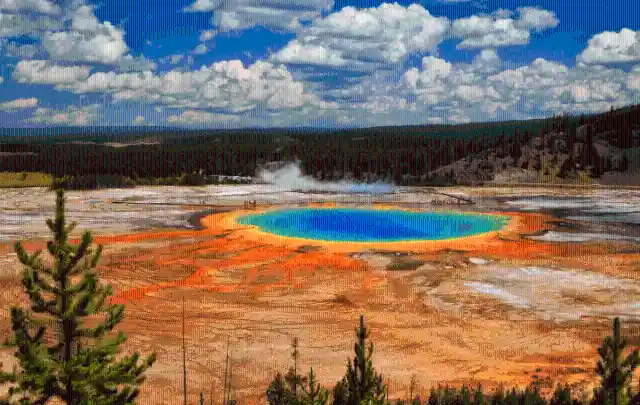
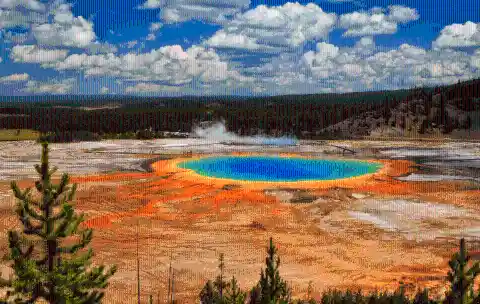
But why are the colors so bright? Well, it’s because of the different types of bacterias that live around the spring, combined with the water’s incredibly high temperatures. The water can nearly reach the boiling point, and the streams of water can reach heights of nearly 120 feet. In Yellowstone Park, you can also visit the Excelsior Geyser, the Turquoise Pool, and the Opal Pool.
Cenote Ik-Kil, Mexico
Located in Ik Kil Archeological Park in the region of Yucatán, this cenote is one of the most visited places in Mexico. If you like swimming in the sea, we highly recommend visiting Cenote Ik-Kil, as it is composed of natural sinkholes with natural clean groundwater. You can lay here all day, surrounded by immense limestone formations.
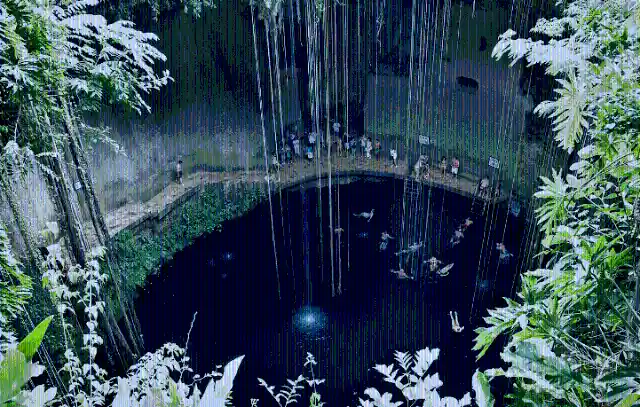
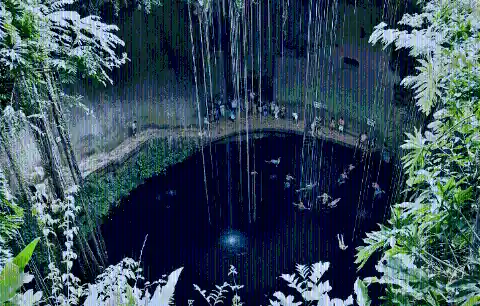
Besides, the park is located in the middle of a tropical forest where you can spot more than 100 bird species, like toucans, parrots, cenzontles, Cardinals, and turquoise mot-mots. If you plan to spend the night in the park, you can either camp or stay at the park’s well-equipped cottages. It will be a unique experience since you’ll hear the sounds of the forest’s creatures all night long!
Uluru, Australia
Uluru, also known as Ayers Rock, is located in the southern part of the Northern Territory in Central Australia. This large sandstone rock formation is unique in the region and it’s one of Australia’s most iconic landmarks. The area used to be sacred to Pitjantjatjara Anangu, the native people of the region.
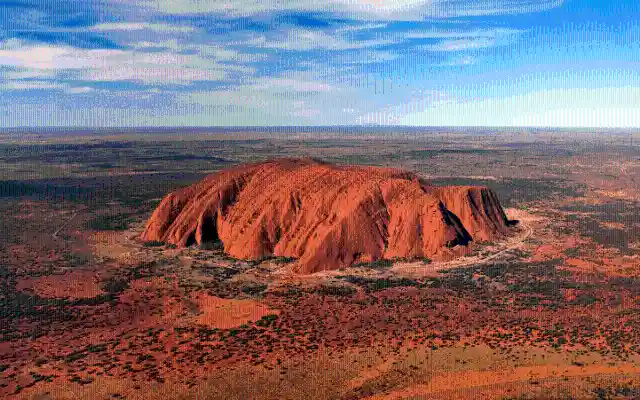
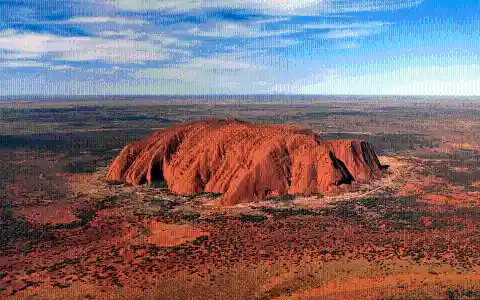
Uluru is one of Australia’s UNESCO World Heritage Sites. Most of the geological formations located in this desert date from different periods, like the Palaeozic and the Neoproterozoic ages. Their shapes and colors are unique, and they even change, since depending on the time of the day, they can either look orange, pink, or red.
Uyuni Salt Flats, Bolivia
If you are planning your next holidays in South America, you need to visit Uyuni Salt Flats in Bolivia. Considered the largest salt flats in the world, they are located more than 12,000 feet over the sea on the Bolivian Altiplano. If you stand in the middle of this shining, white, flat landscape, it seems as if there were no end to it.
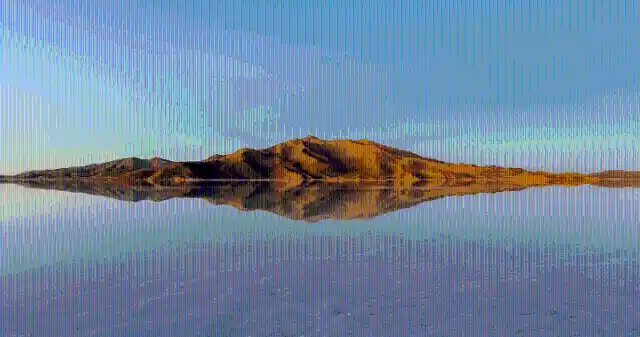
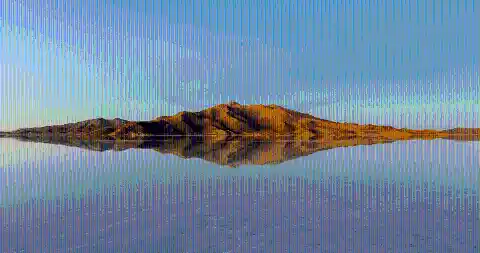
The Uyuni Salt Flats receive hundreds of thousands of tourists each year, making it the most visited place in Bolivia. You can either take a day tour from a nearby city or spend the night in the salt desert, as there are some hotels in the area, all of them built with salt blocks! The best time of the year to visit is from May to November.
Zhangjiajie National Forest Park, China
The Zhangjiajie National Forest Park is a unique national forest located in Hunan province, China. In 1982, it became the first national forest park in the country. A decade later, in 1992, it became a UNESCO World Heritage Site. The park is famous because of its unique pillar-like sandstone formations, which are the result of many years of erosion.
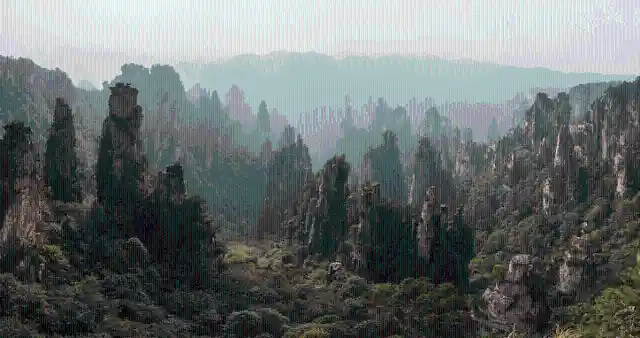
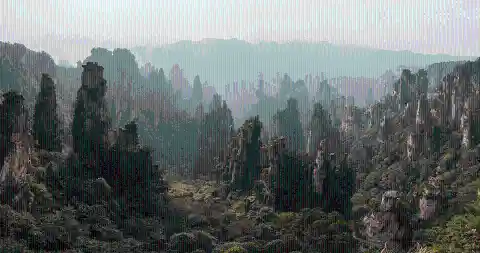
The park has a special mystic vibe that makes you feel like you are in a fairy-tale. The sandstone pillars can reach almost 3,540 feet and the most famous one is known as the “Avatar Hallelujah Mountain”. This mountain can be visited with local guided tours, but book in advance, because there is a maximum number of people allowed every day in the park.
Plitvice Lakes National Park, Croatia
Considered one of the oldest national parks in Croatia, Plitvice Lakes National Park is a UNESCO World Heritage Site since 1976. It contains 16 beautiful and clear lakes, that will make you want to stay there forever. The majority of the park is covered with forest vegetation and only 1% is covered by lakes.
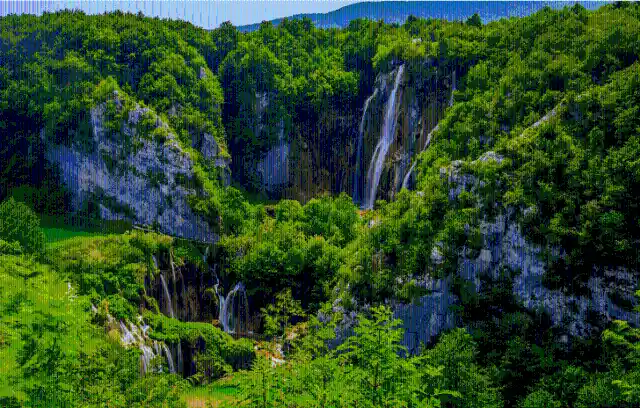
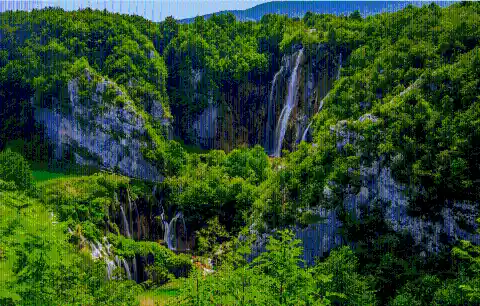
The lake system consists of 16 lakes that are divided into the Upper and Lower lakes. Some of the most visited ones are Prošćansko Jezero, Ciginovac, and Okrugljak. All the lakes end in the immense Sastavci Waterfalls, which then flow into the Korana River. The park is perfect for a day tour and it’s ideal for hiking lovers.
Panjin Red Beach, China
Red is the color of love and we are completely sure you will fall in love with the Panjin Red Beach located in Dawa County, China. The landscape is well-known because of the red plant _Suaeda salsa_, which is a type of succulent that only grows in this part of the country. Why only here? Because of the conditions of the soil, which is salty but alkaline at the same time.
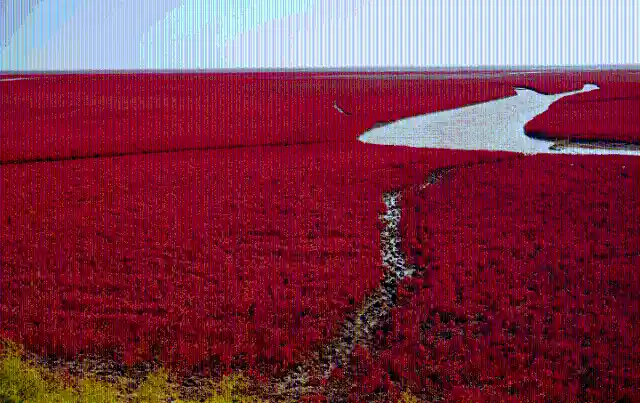
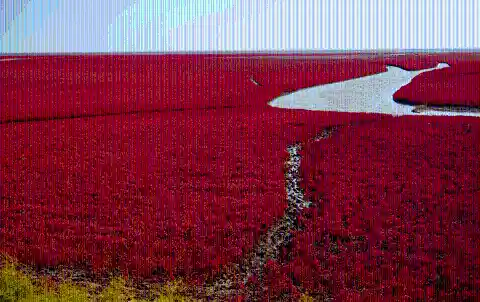
Panjin Red Beach is not actually a sandy beach but it has been one of the most visited places in China since 1984. The bright colors of the plants are unique in the world and it’s a must visit place for those of you who are into eco-tourism. You can go to the beach by bus from Panjin City, but there are also many companies that offer a whole-day tour to Panjin Red Beach at a low price.
Paria Canyon, USA
Located between southern Utah and northern Arizona, the Paria Canyon is considered a symbol of the Old West. Its many geological formations, which include arches, cliffs, domes, and terraces are unique in the region and will take your breath away. Also, the mountains’ variety of colors mixed with the light of the sun makes this place a natural artwork.
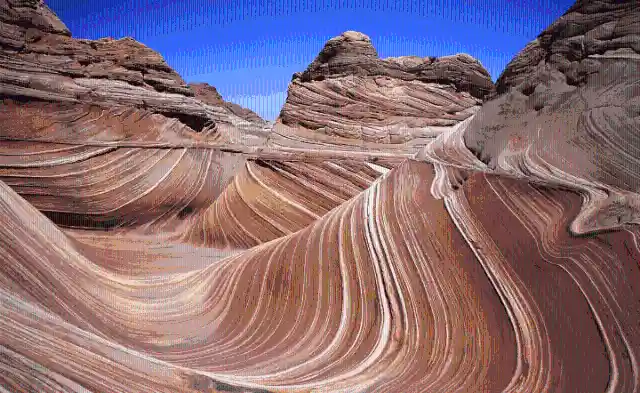
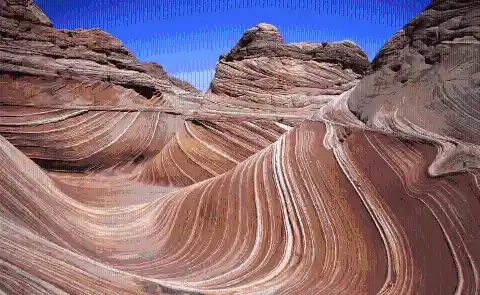
There many activities that you can do in Paria Canyon, although the most popular ones include hiking and canyoneering. If you are up for those activities, remember that you will need special permits. The area contains many petroglyphs which are more than 700 years old, which you can see but not touch.
Victoria Falls, Zambia And Zimbabwe
Nothing more gorgeous and astonishing than the Victoria Falls. Located between Zambia and Zimbabwe, they are the second largest falls in the world, after the Iguazu Falls. These waterfalls are also known as the _“Greatest Curtain Of Falling Water In The World”._
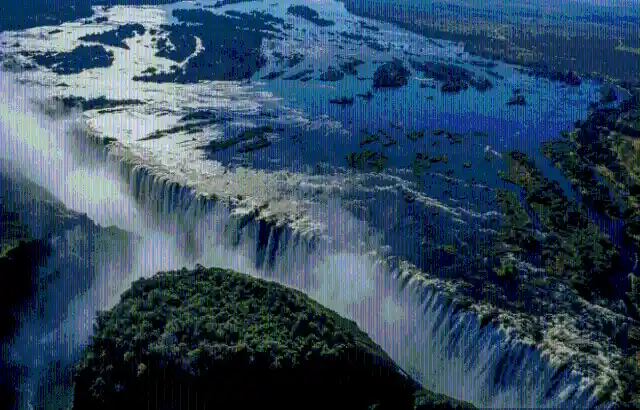
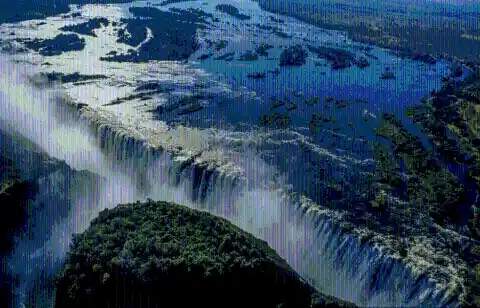
Walk across the Knife-edge Bridge, since this is where you’ll have the best views of the Eastern Cataract, the Main Falls, and the so-called Boiling Point. The best way to reach the falls is from the Zambian town of Livingstone, which is more or less 11 kilometers away. If not, you can also stay in the town of Victoria Falls in Zimbabwe.
Pamukkale, Turkey
Known as the “Cotton Castle”, these amazing hot springs are located in the valley of the Turkish Büyük Menderes River. Surrounded by brilliant white travertine terraces and warm pools, Pamukkale is one of the most visited places in Turkey. It’s also home to the well-preserved ruins of the ancient city of Hierapolis. As you may imagine, it’s one of the country’s UNESCO World Heritage Sites.
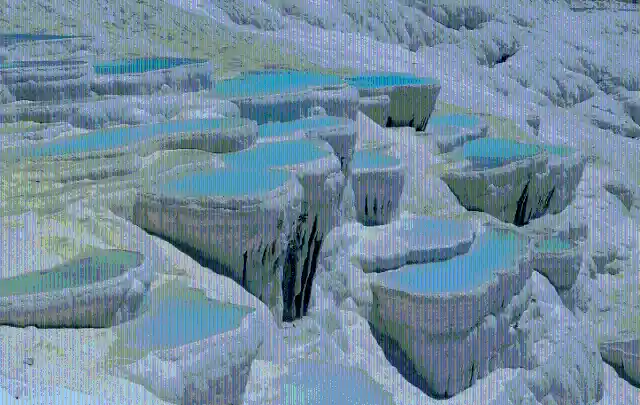
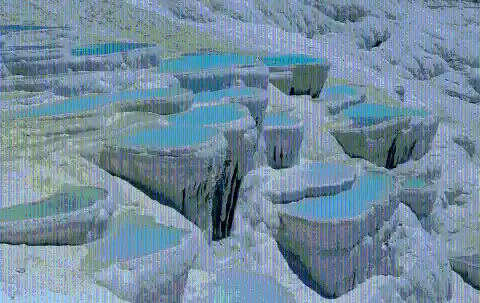
Almost two million people visit this area every year. The terraces are actually limestone formations deposited by the abundant hot springs. Hundreds of years ago, this site was an ancient Greek and Roman spa city, and even today you can take a bath and enjoy the hot waters and their minerals, like the ancient society used to do.
Mount Roraima, Venezuela
Located in Venezuela‘s Canaima National Park, Mount Roraima is the highest mountain of the Pakaraima mountain range. Monte Roraima’s cliffs are 1,300-foot tall and more than 12 square miles long. This unique geological formation is made out of sandstone and it lacks vegetation, although some parts are covered in grass.
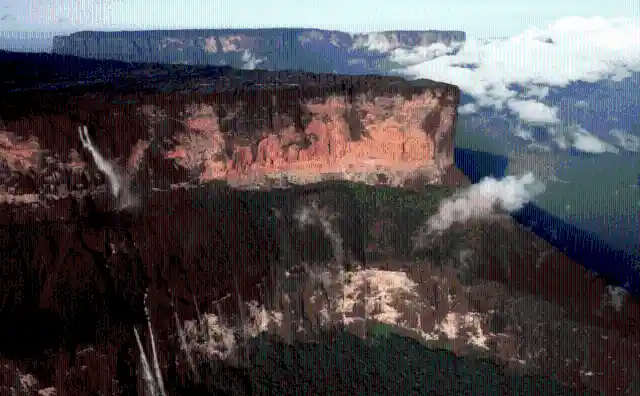
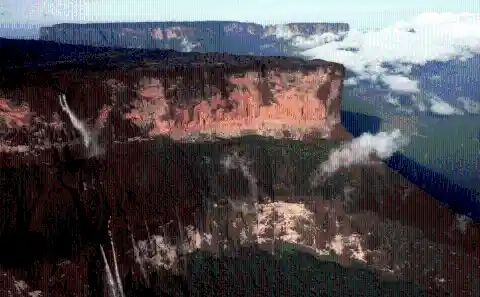
This area is home to rare species of plants and animals, like pitcher plants, Bellflower, and Rapatea heater. The best time to climb the mountain is during the dry season from December to April but remember that it won’t be easy for beginners. However, the marvelous and unique view from the top of the cliff will be worth the effort! It is said that Arthur Conan Doyle was inspired by the nature and scenery of Mount Roraima when he wrote _The Lost World_.